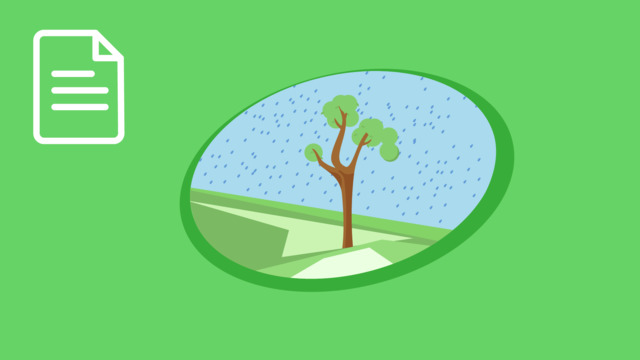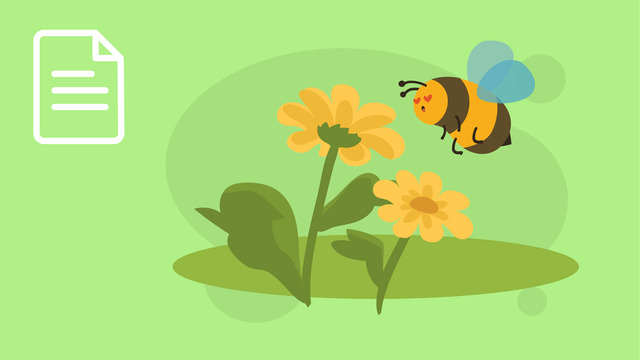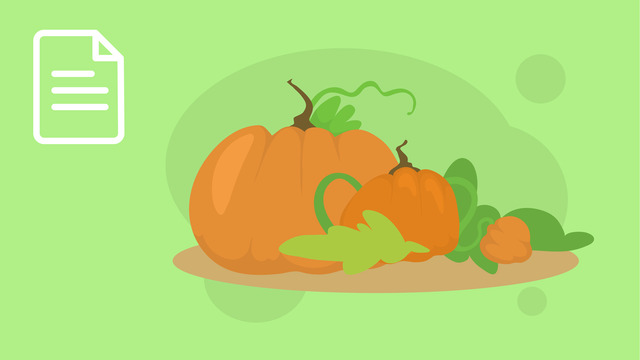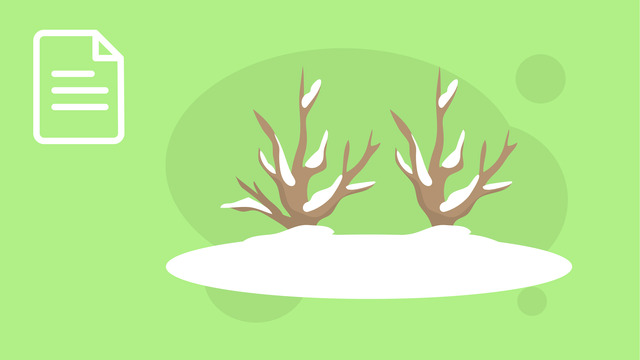Summer Season and Weather
- Summer Season and Weather - Introduction
- What is Summer?
- Summer Facts: A Closer Look
- Summer’s Impact on the Environment
- Summer’s Impact on Plants
- Summer’s Impact on Animals
Learning text on the topic Summer Season and Weather
Summer Season and Weather - Introduction
Why are summer days so long and usually very hot? Summer is like nature’s grand parade, showcasing vibrant life under the golden sun. Let's dive into the wonders of summer and uncover the beauty and warmth it brings to our world!
What is Summer?
Summer is the season of warmth, vibrancy, and growth. It's when the sun blazes more brightly, days grow longer, and life thrives in its warmth. Everything in nature, from the tiniest insects to the tallest trees, basks in the abundance of sunlight.
Summer follows spring, marking a period of the highest temperatures of the year. This season is characterized by long, sunny days and short nights.

During summer, the Earth’s hemispheres are tilted directly toward the Sun, leading to increased temperatures and sunny weather. This is the time for outdoor adventures, growth, and enjoying the richness of nature.
Let’s test your knowledge about summer so far!
Summer Facts: A Closer Look
Summer weather is nature's way of turning up the heat, offering clear, sunny skies and, sometimes, the challenge of heatwaves. This season is crucial for the growth and development of plants, providing ample sunlight for them to feed and grow. You may also get the occasional rain too!
In the Northern Hemisphere, summer spans from June to August, while in the Southern Hemisphere, it stretches from December to February. Here's a glimpse of typical summer weather patterns in the Northern Hemisphere:
| Month | Typical Summer Weather |
|---|---|
| June | Warm and sunny |
| July | Hot and sunny |
| August | Hot,sometimes rainy and stormy |
Summer’s Impact on the Environment
Summer plays a pivotal role in the life cycles of many organisms, impacting not only the flora and fauna around us but also the lives of humans.
Summer’s Impact on Plants
The abundance of sunlight and warmth accelerates the growth of plants. It's a season when fruits and vegetables are in abundance, and flowers display their full glory. However, when it stays hot and dry for long periods of time, plants can wilt and dry out. We also harvest many vegetables that were planted in Spring at the end of Summer!
Summer’s Impact on Animals
Insects like bees and butterflies are more active, pollinating plants and contributing to the ecosystem's balance. This season is vital for agriculture, with many crops reaching their peak growth and harvest period.
Animals are highly active during summer, with many species engaging in feeding, breeding, and nurturing their young. This season is crucial for the survival and thriving of wildlife populations.
| Animal Activity | Summer Impact |
|---|---|
| Increased Feeding | Supports growth and preparation for colder months |
| Breeding and Rearing | Ensures species survival and diversity |
Summer Growing Experiment
Engage with summer’s energy through this simple experiment where you will grow a sunflower!
How Well Do You Understand Summer?
Let’s review what you’ve learned about summer!
Summer Season – Summary
Key Learnings from this Text:
- Summer is the warmest season, characterized by long days, short nights, and vibrant natural life.
- Summer in the Northern Hemisphere happens in June, July, and August
- The weather in summer typically includes hot, sunny days that are ideal for outdoor activities and growth.
- This season is crucial for the environment, promoting the growth and flourishing of plants and animals.
Now you're equipped with the knowledge of why summer is such a dynamic and lively season! It's a time for growth, exploration, and enjoying the warmth that nurtures life on Earth. Learn more about the other seasons with learning texts on the Fall season, Spring season, and Winter season. If you want to learn even more, then check out the text on different climates around the world!
Summer Season and Weather – Frequently Asked Questions
Summer Season and Weather exercise
-
Which months does summer fall in in the northern hemisphere?
HintsThink about when you have summer vacation from school — which months are you off?
Remember, summer months can be different in the southern hemisphere.
SolutionIn the United States, summer falls during the months of June, July, and August.
These are the months when the weather is usually very warm and sunny, making it a great time for outdoor activities like swimming and picnicking.
-
What happens to the sunlight hitting the Earth in summer because of the way Earth is tilted?
HintsThink about what happens to a place when the sun shines directly on it for longer periods during the day.
Does it get warmer or colder?
Consider what you know about the sun’s position in the sky during summer.
Is it higher or lower?
How might this affect the temperature?
SolutionThe sunlight hits the Earth more directly, making it warmer.
The tilt of the Earth's axis is the reason for the change in seasons.
During summer, the hemisphere that is experiencing summer (either the Northern or the Southern) is tilted toward the Sun.
This tilt doesn't mean that the hemisphere is closer to the Sun in a significant way; rather, it's about the angle at which the sunlight hits the Earth.
-
Which outdoor activities can we do in the summer?
HintsThink about the activities that are fun to do when it's warm and sunny outside.
Which ones do you enjoy when you don't need a jacket?
Look at each picture and imagine which activities you would like doing with your friends or family during a long, sunny day.
There are 2 correct answers.
SolutionIn summer, we can:
- swim in the sea,
- have a picnic at the park.
-
What is a consequence of the long, sunny days of summer on the life cycle of plants?
HintsSunlight is the light that comes from the sun.
Plants need it to grow and stay healthy, just like you need food.
Fruits are the sweet or sometimes sour parts of plants that usually contain seeds.
Examples are apples, bananas, and oranges. You can eat them.
SolutionDuring the long, sunny days of summer, plants have more exposure to sunlight, which is critical for the process of photosynthesis.
Photosynthesis is how plants use sunlight to make their food from air and water.
As a result, they often experience a period of strong growth and can produce more leaves, flowers, and fruits.
-
What are summer days and nights like?
HintsThink about when you play outside in the summer—does it get dark early or late?
Remember, in summer you have more daylight to enjoy fun activities during the day before it gets dark.
SolutionIn the summer, the days are long and the nights are short.
In summer, the sun rises earlier and sets later, giving us more daylight hours to enjoy activities like swimming, hiking, and picnics.
Even though the total day length remains the same, the extended daylight makes summer days feel longer.
-
How does summer weather potentially impact agriculture?
HintsConsider how the changes in weather during summer affect the rate at which plants grow and when they might be ready to be picked or collected.
Think about what farmers do during different seasons and how the summer conditions would influence the timing of their work, especially harvesting.
SolutionSummer weather, characterized by its longer days and increased sunlight, is beneficial for agriculture as it allows most crops to reach their peak growth.
The warm temperatures and extended daylight hours enhance the photosynthesis process, which is essential for the growth of plants.
At the end of this season, many crops that were planted in spring mature and can be harvested.
This is a key period for farmers as it decides the success of their harvest.
However, if the summer is exceptionally hot and dry, it can also pose a challenge for agriculture by requiring more irrigation and careful water management to ensure crops do not suffer from drought.



















